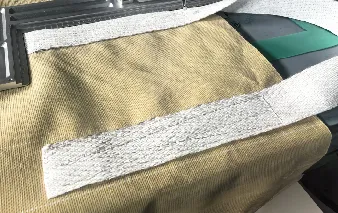Exploring the Versatility and Benefits of the 301 Lock Stitch Technique in Sewing
Understanding the 301 Lock Stitch A Key Element in Sewing Technology
The 301 lock stitch is an essential mechanism in the world of sewing technology, prized for its simplicity and versatility. This stitch type plays a crucial role in the garment industry, home sewing, and various textile applications. Its design and functionality have made it a staple in both domestic and industrial sewing machines, making it a go-to choice for sewers of all skill levels.
At its core, the 301 lock stitch is created by interlocking two threads the upper thread and the lower thread. The upper thread, often a finer material, is fed from the sewing machine’s spool through a needle. Beneath the fabric, the lower thread, typically a bobbin thread, is released to form a secure stitch. The lock stitch mechanism ensures that each stitch is tight and durable, making it ideal for seams that will endure wear and tear.
One of the key advantages of the 301 lock stitch is its ability to produce a strong seam. Unlike other stitch types that may run the risk of unraveling or fraying, the interlocking nature of the lock stitch secures the threads, providing a sturdy hold. This strength makes it particularly beneficial for sewing high-stress areas such as armholes, inseams, and waistbands in clothing.
In addition to its durability, the lock stitch is also appreciated for its aesthetic qualities
. The stitch creates a smooth, flat seam on the front side of the fabric, while leaving very minimal visible stitching on the reverse side. This characteristic is crucial for fashion design, where appearances matter significantly. The clean finish of the 301 lock stitch enhances the overall look of garments, allowing designers to create visually appealing and professional-looking products.301 lock stitch

Furthermore, the 301 lock stitch is highly adaptable, suitable for various fabrics ranging from lightweight silks to heavy-duty denim. This adaptability makes it a preferred choice not only for apparel manufacturing but also for crafting home textiles, such as curtains, upholstery, and bed linens. Sewers can adjust the tension and stitch length according to the fabric in use, allowing for precision and control that can accommodate different project requirements.
From a technical perspective, the 301 lock stitch is often associated with the operation of sewing machines. Whether manual or electronic, these machines are designed to facilitate the lock stitch process efficiently. Users can easily navigate settings for stitch length and tension, allowing for personalized results based on their specific projects. Advanced sewing machines even offer automated features, making the process more user-friendly and accessible.
As sewing technology continues to evolve, the fundamental nature of the 301 lock stitch remains largely unchanged, standing as a testament to its effectiveness and reliability. Innovations in thread materials and sewing machine technology only serve to enhance its performance, making it an enduring choice in the textile industry.
In conclusion, the 301 lock stitch is a fundamental stitch type that embodies the essential qualities required for effective sewing—strength, aesthetic appeal, and versatility. Whether used by beginners honing their craft or professional tailors creating intricate designs, the lock stitch continues to play a vital role in the art of sewing. Understanding and mastering the 301 lock stitch can open doors to a myriad of creative possibilities, allowing individuals to explore the rich world of fabric and fashion with confidence.
-
Boost Production Efficiency with a Pattern Sewing MachineNewsAug.29,2025
-
Industrial Excellence with the Best Heavy Duty Sewing MachineNewsAug.29,2025
-
Precision and Power with the Best Pattern Sewing MachineNewsAug.29,2025
-
Reliable Bulk Packaging Starts With the Right FIBC Sewing MachineNewsAug.29,2025
-
Advanced Packaging Solutions: Elevate Productivity with Jumbo Bag Sewing Machine and Industrial Stitching EquipmentNewsAug.29,2025
-
High-Performance Solutions for Bulk Packaging: FIBC Sewing Machine and MoreNewsAug.29,2025
-
Maximize Efficiency with an Industrial Cylinder Arm Sewing MachineNewsAug.28,2025


























